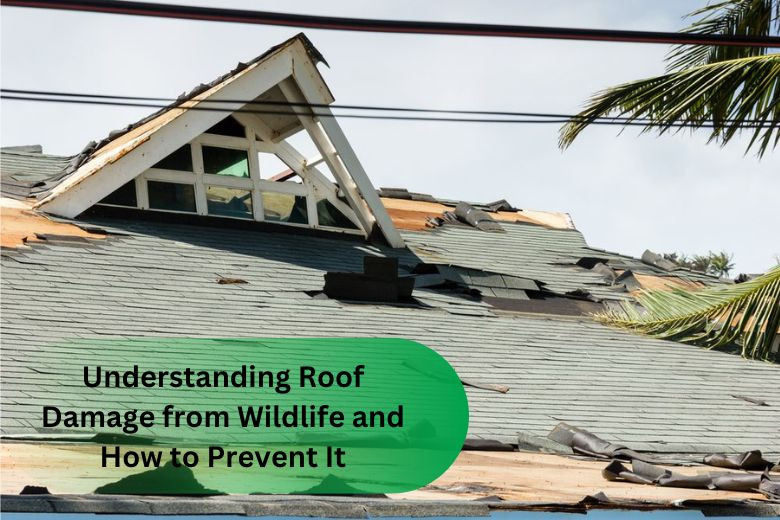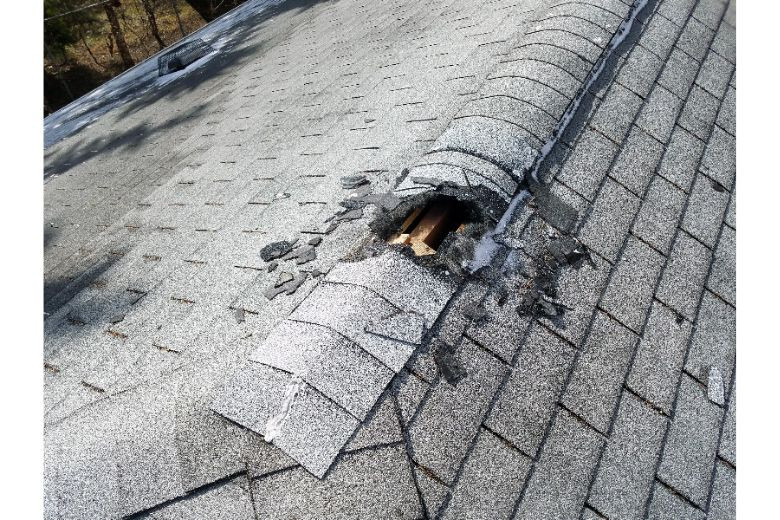Understanding Roof Damage from Wildlife and How to Prevent It
Posted on October 02, 2024 by Admin

One of the common yet major issues that many homeowners face with their roofing is the damage caused by wildlife. Animals in search of shelter or food can do significant harm to roofing structures. A clear understanding of what causes wildlife damage to your roof and working with a Roof Service Provider to apply effective prevention measures will help save you both time and money.
Some Common Causes of Wildlife Damage on the Roof
There are many types of wildlife that can cause roof damage. For instance, birds often nest in gutters and along the eaves, thereby blocking the flow of water and causing potential water damage. Squirrels and raccoons chew through roofing to get into attics; once inside, they will continue gnawing all the time, severely weakening the integrity of the roof. Even small pests, such as mice and rats, can cause extensive roof damage by gnawing through insulation and wiring.
Identifying Roof Damage Caused by Wildlife
The early identification of roof damage caused by wildlife may prevent minor issues from becoming major problems. Common signs include the following:
Visible Entry Points:
Examine the holes, gnawed areas, or loose shingles that may indicate a point through which an animal has gained entry into your home.
Unusual Noises:
Scratching, scampering, or chirping sounds from the attic or walls clearly signify the presence of wildlife.
Droppings and Nesting Materials:
The presence of droppings or nesting materials in your attic is a sure sign that wildlife has invaded your roof.

Blocked Gutters:
Gutters are blocked by the nests of birds or other kinds of junk. Thereby, it obstructs the flow of water and consequently makes it overflow onto the roof, which causes damage.
Read Must: Top 5 Signs Your Roof Needs Repair or Replacement
Preventive Measures to Protect Your Roof
One can protect roof damage from wildlife through a mixture of regular maintenance and deterrent strategies. Following are some effective measures for this purpose:
1. Regular Roof Inspections:
More than anything else, the roof should be inspected semi-annually for any damage or entry points. Getting a jump on these things will give you the best opportunity to repair them before they get worse.
2. Seal any entry points into the structure:
This would especially include gaps in the roof line, vents, and chimneys; use stout material such as metal flashing for coverage in those spots.
3. Gutter Guards Installation:
Generally, gutter guards are installed over the gutters to avoid the entrance of birds and other wildlife that might build nests in gutters, develop blockages in them, and even avoid water damage.
6. Trimming the Overhanging Limbs:
Trees that are very close to the roof can provide easy entry for wildlife. Trim the branches regularly to keep them from the roofline.
7. Deterrents:
Several kinds of deterrents may be used to help keep wildlife out of your roof area. Motion-activated lights, ultrasonic devices, and even some smells can all be very effective deterrents for these animals.
8. Proper Waste Management:
Tighten the garbage bins well and keep them away from the house. This is an additional method to eliminate attraction to the house for food and thus reduce the chances of wildlife trying to enter the roof.
Read Must: The Benefits of Regular Roof Maintenance
Conclusion
Wildlife damage to your roof is a serious problem that most homeowners have to contend with. Still, with a greater degree of awareness and prevention measures in place, you can ensure the same is effectively managed. The two key methods for defending your roof against damage from wildlife are regular inspections, sealing entry points, and deterrents. A reliable Roof Service Provider can assist in identifying vulnerabilities and implementing necessary repairs. Keeping vigilant and proactively taking steps in this regard will better ensure the service life and integrity of your roofing structure and keep you safe from expensive repairs or dangers that could arise from that in the long term.Knowing how to prevent roof damage by wildlife protects not just your home; you are also promoting a safe and healthy living environment. Implement these strategies today and rest assured with a guarded roof.
Also Read :
The Importance of Proper Attic Ventilation for Roof Health
How to Identify and Prevent Roof Mold and Mildew
The Best Practices for Removing Snow from Your Roof
The Role of Roof Decking in Structural Integrity
The Benefits of Cool Roofs in Hot Climates
How to Install a Tankless Water Heater: Pros and Cons
The Benefits of a Home Plumbing Maintenance Plan
Roof Safety Tips for Homeowners
The Impact of Algae and Moss on Your Roof
Faqs
-
1. What is the most frequent wildlife that may cause roof damage?
Birds, squirrels, raccoons, mice, and rats are the most frequent culprits of wildlife roof damage. They chew through roofing materials, build nests, and block gutters.
-
2. How will I know I have roof damage from wildlife?
Look for holes or loose shingles that are visible entry points, scratching or scampering unusual noises, droppings, and nesting materials in the attic or blocked gutters.
-
3. What are some of the best prevention methods against roof damage by wildlife?
Regular roof inspections, sealing off the entry points, fitting gutter guards, trimming off the overhanging branches, using deterrents, and proper disposal of wastes are some of the best ways to prevent roof damage from wildlife.
-
4. How often should I check my roof for wildlife damage?
A bi-annual roof inspection is in order. Be on the lookout for any signs of damage or potential entry points and deal with problems before they become serious.
-
5. Are there any specific materials which would prevent wildlife from damaging my roof?
It is possible to significantly reduce the damage that wildlife causes to roofs by closing gaps and entry points with metal flashing and other long-lasting materials, and by preventing nesting using gutter guards.
Recent Post
- Top Plumbing Service Providers in Arizona, USA
- Top 10 Electrician Service Providers in Alabama, USA
- Top 20 Roof Repair Service Providers in Alabama, USA
- The Role of Roof Insulation in Energy Efficiency: Tips and Tricks
- Understanding Roof Damage from Wildlife and How to Prevent It
- How to Choose the Best Roofing Contractor for Emergency Repairs
- Roofing Maintenance for Historic Homes: Preserving Architectural Integrity
- The Importance of Proper Attic Ventilation for Roof Health
- How to Identify and Prevent Roof Mold and Mildew
- The Best Practices for Removing Snow from Your Roof